► UK now has more than 50,000 chargers
► Guide to electric car charging in UK
► The ins and outs of charging your EV
The 50,000th electric car charging point has opened in the UK, marking a significant milestone as the country prepares infrastructure for the EV transformation sweeping the industry.
ZapMaps, which charts the location and availability of charging points in its popular app, reported the 50,000th charger was installed by MFG EV Power at a service station in Weston-super-Mare in western England.
It said that the number of chargers in Britain had jumped by an 68% since September 2022. To give an idea of the speed of roll-out, this is when earlier milestones were passed:
- 10,000th charger August 2018
- 20,000th charger September 2020
- 30,000th charger February 2022
- 40,000th charger February 2023
- 50,000th charger October 2023
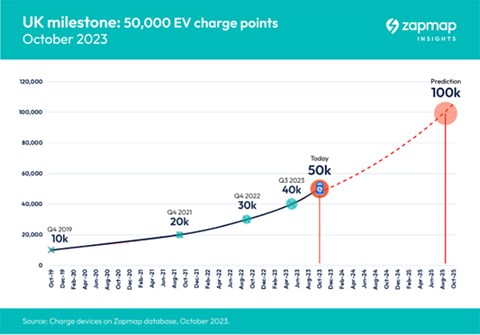
At the current rate of installation, ZapMap predicts that the UK’s 100,000th charging point will be complete by August 2025.
Best charging networks in the UK 2023
The UK charging roadmap: a rapid rise, but is it enough?
The government has already pledged to build more than 270,000 new public chargers by 2030 in order to keep up with anticipated demand following the announcement of the petrol and diesel ban and the increase in popularity of electric cars.
A total of £1.6 billion has been put aside for the chargers. The aim is to support people without access to off-street charging and improve fast charging infrastructure for long journeys by increasing the number of public charging points from around 50,000 to 300,000. Once installed, the UK will have around five times as many chargers as it does fuel pumps, ministers claim.
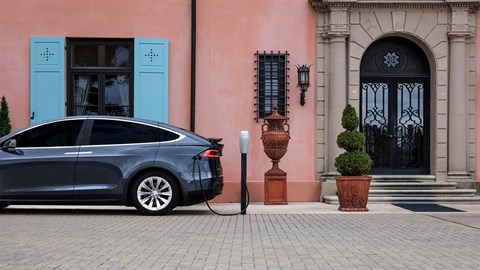
As part of the scheme, new legal requirements will see drivers of EVs able to pay by contactless credit. ordebit card, compare charging prices and find nearby chargepoints via apps.
These plans will also require a 99% reliability rate at rapid chargepoints to ensure they are ‘world-class’.
VIDEO: coast-to-coast challenge by Kia EV6 (powered by Shell Recharge)
How’s the money being spent?
£500 million will be invested to bring public chargepoints to communities across the UK. This includes a £450m Local Electric Vehicle Infrastructure (LEVI) fund, which will boost projects such as EV hubs and on-street charging.
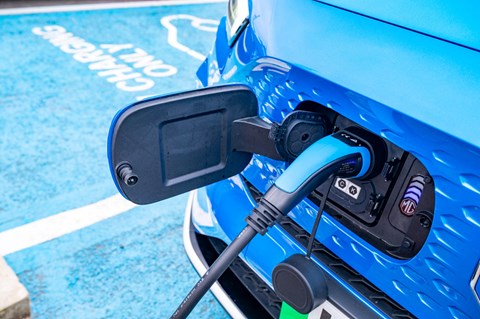
Meanwhile, the LEVI funding also includes up to £50m to fund staff to work on local challenges and public chargepoint planning.
The existing £950m Rapid Charging Fund will support the rollout of at least 6000 high powered super-fast chargepoints across England’s motorways by 2035.
EV public charging: topping-up away from home
Have you been thinking about ditching your petrol or diesel car for an electric one? If so, it might feel like quite a daunting proposition and a big leap to make – but worry not; advances in both technology and infrastructure are making the transition far easier than you might think.
For starters, ever-improving batteries and EV hardware are resulting in notable increases in the real-world range of electric vehicles. This, in conjunction with quicker charging, often means there’s less justification for range anxiety. Similarly, the UK’s charging infrastructure continues to expand and become more easily accessed. If you can charge at home overnight, it might be the case that you rarely have to use a public charging station.
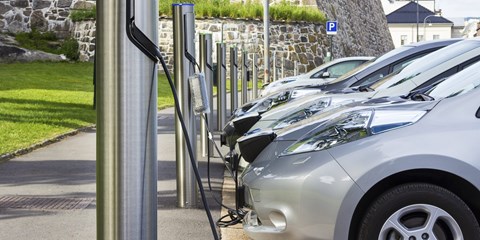
On this page, we’ll explain everything you need to know about EV charging in the UK – from where things are headed, to the types of charger you can currently connect to, how to charge at home and how to find the best public charging network.
Electric car charging: find your nearest station
ZapMap is one of the most useful resources for any EV owner, and regardless of which electric car you’ve got, it’ll show a good deal of information. To find out your nearest electric charging station, head to this link and then type in your postcode.
After that you’ll be shown a map with all your local EV charging stations, and each site is colour-coded depending on the type of charging on offer. ZapMap has a community element – so you’ll be able to see any problems reported with chargers, too. Google Maps also provides locations for electric car chargers too, so it’s easier than ever to find somewhere to top up.
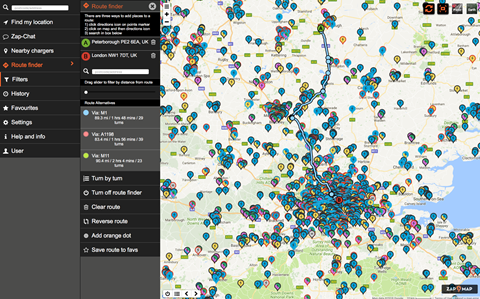
Our guide to electric car batteries
Electric car charging: planning your journey
Most modern EV sat-nav systems include charging stops when planning a route – but if you’re keen to check your route before you get in the car, ZapMap is also the best place to go. You’ll need to create an account first, but after that getting a suitable route is as easy as going to the route planner and entering your destination and starting point.
The map will then show charging stations along the way, and you can drag a slider to show suitable charging plugs further afield if needed.
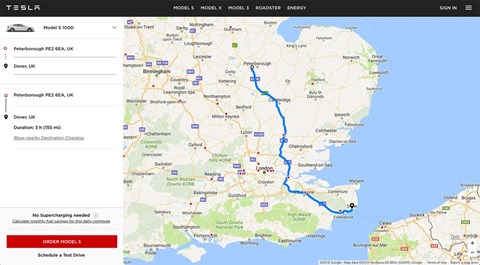
If you’ve got a Tesla, you’ll be able to use a more bespoke tool. Elon Musk’s EV company launched a journey planner which helps you map out any route with your EV. Because the tool is specific to Tesla, it’s able to carefully calculate your route based on the range of your car – and it’ll also favour Tesla’s own speedier Supercharger network, too. You can try the tool out here.
Further electric car reading
What charging stations are available in the UK?
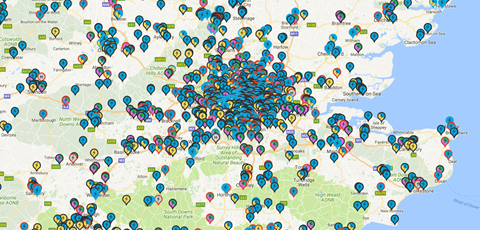
The number of charging points in the UK is growing all the time – it went up 31% in the last 12 months – and they’re being provided by a range of new and existing networks. As previously mentioned, the highest concentration of chargers exists in London, though areas such as the West Midlands are catching up and should be more saturated in the years to come.
The picture is only set to improve, as OEMs such as Mercedes and Audi look set to build their own rivals to the Tesla Supercharger network.
Read this for a thorough rundown of the best charging networks in the UK
Electric car charging: types and connectors
Like any new bit of technology, electric cars currently use multiple standards of connection. But this isn’t as stressful as the Betamax, VHS war though; most cars feature at least two types of connector, and adaptors are easy to use. EVs are very clear on what type of connector you can use, and it’s almost impossible to use the wrong charger in the wrong EV – this isn’t like petrol or diesel. What’s more, apps such as ZapMap make things even easier: you set the electric car you own, and the app will show you compatible chargers nearby. In a worst-case scenario, you’ll be able to charge – but you might not get the fastest possible charging speed.
At present, charging comes in three flavours, with a handful of different connections used for each.
1. Rapid chargers
As you’d expect, these are the fastest type of charger, and comes in both AC and DC forms. Both of these standards operate at between 43kW to 50kW of power, and that means they’re able to charge 80% of a battery in 30 minutes to an hour. Rapid AC chargers will use a Type 2 connector, while Rapid DC connectors use CCS or the catchy CHAdeMO standard. And one more thing. Tesla’s Superchargers count as rapid chargers, and they use their own bespoke connection to achieve transfer of up to 120kW. Still, adaptors are available.
2. Fast chargers
A fast charger is anything classed as between 7kW and 22kW, and will charge an EV in up to four hours. While not as fast as rapid chargers – and about four-times slower – they are probably the most common type of charger in the UK right now. These are ideal for home use, too.
3. Slow chargers
A slow charger is regarded as anything up to 3kW, and is therefore used primarily for overnight charging. This is trickle-charging for electric cars, and your last resort when it comes to topping up. The good news? You can use any domestic three-pin plug to slow charge at home. The bad news? It’ll take between hours and maybe even days, depending on the size of your battery…
Further electric car reading
The best electric cars and EVs on sale today
How much does it cost to charge an electric car?
The best hybrids, plug-ins and PHEVs
Wireless electric car charging